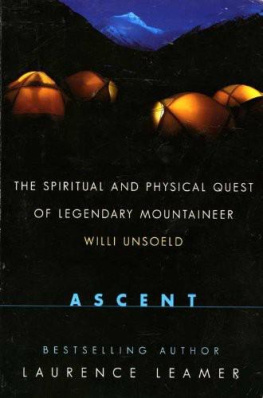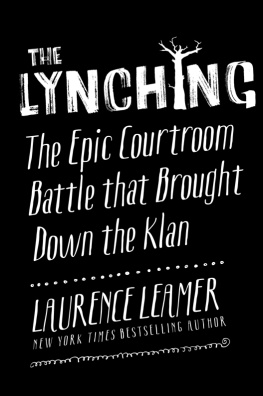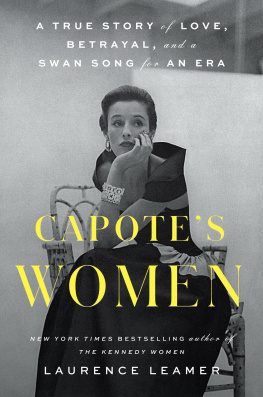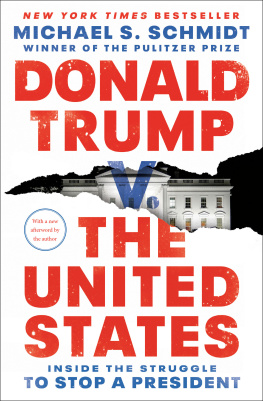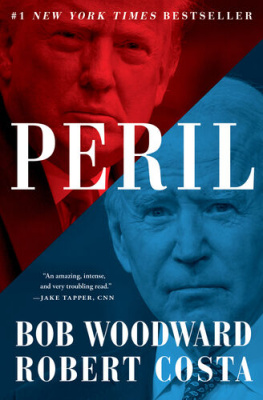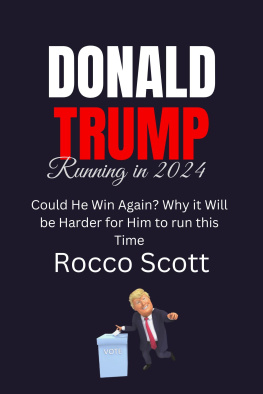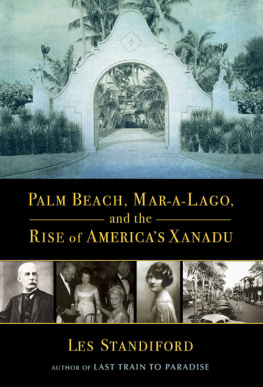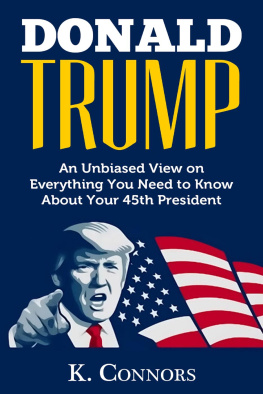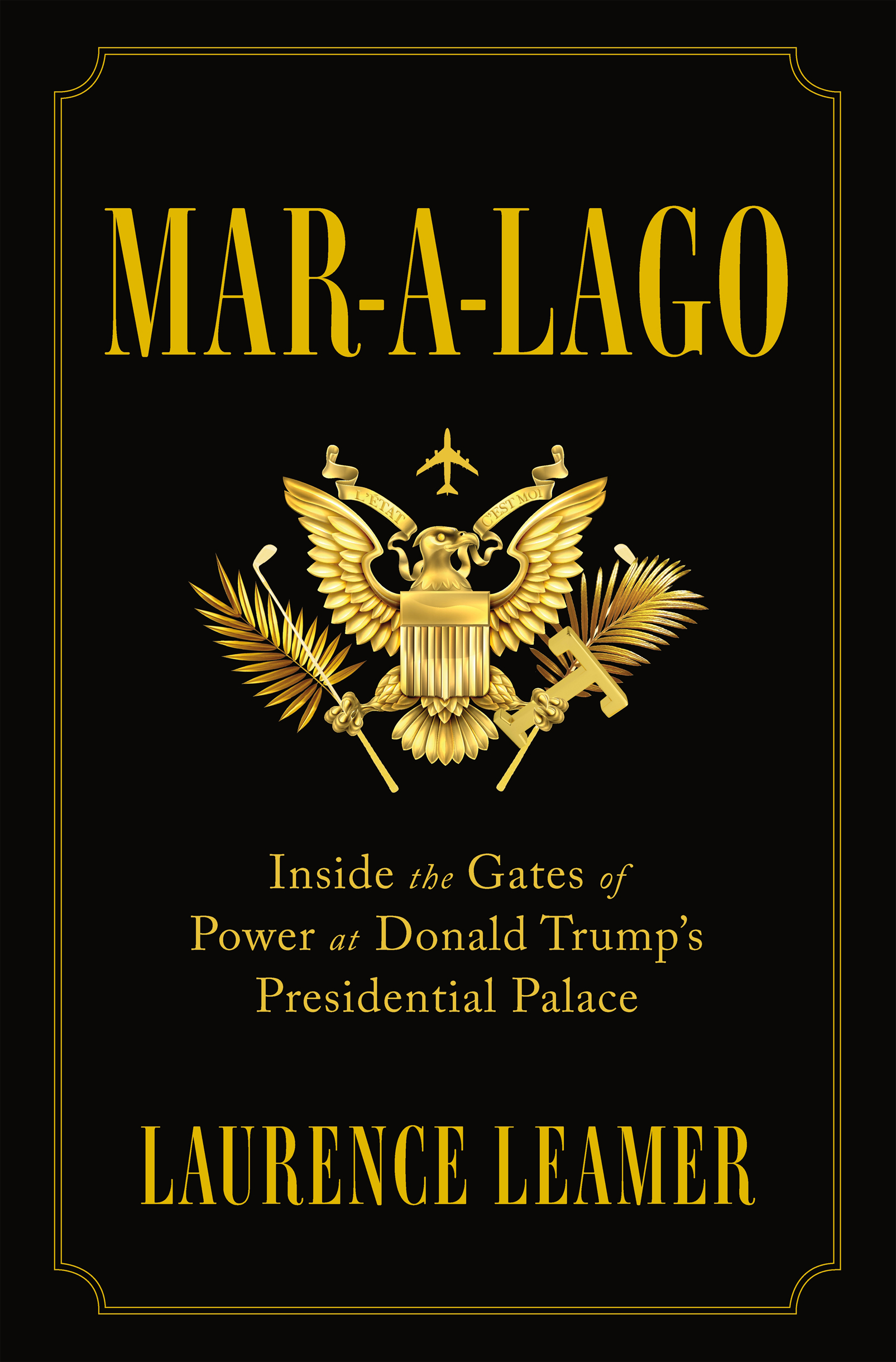M y wife and I purchased our home in Palm Beach in 1994, the same year that Donald Trump turned his Mar-a-Lago estate into a club. I am not a member but have several friends who are. A number of times each season they invite me for lunch or dinner or to play tennis on the red clay courts. For most of those years, on the weekends Trump was omnipresent, dining with family and friends, strutting around the mansion greeting members, and until he gave up the sport, an exuberant presence on the tennis courts.
When I was researching my 2009 book about Palm Beach, titled Madness Under the Royal Palms, I intended to make Trump a major character. But my editor put the kibosh on that.
He said that Trump was overexposed, a tedious bore whom no one wanted to hear about any longer. Soon afterward, I attended an event at Mar-a-Lago and told him the exchange Id had with my editor. Overexposed? he replied. Youve got to be fucking kidding. Im Donald Trump.
Palm Beach is a very closed and private world. Residents think that if they are written about at all it should be in celebratory tones, and my book was definitely not written that way. It was greeted with outrage. People didnt dare to read it in public in Palm Beach. At an editorial meeting of the Palm Beach Daily News, the editor said my name was never again to be mentioned in its pages, a ban that continues to this day. When I was driving around town with a French television crew filming a documentary, the car was driven off the road by an SUV. A few days later, at a charity event, police chief Michael Reiter suggested I should hire security, as my life might be in danger. When local NBC Channel 5 was filming a segment about the book, a passerby ran into the camera shot and started screaming at me.
I have the same friends I have always had and I like where I live. I asked myself long and hard, Did I want to risk going through that all over again? My answer is this book. I am convinced that Donald Trumps life in Palm Beach is an absolutely essential way to understand his character. All that he learned there contributed greatly to his successful run for president and to his becoming the kind of leader he is.
My research began by going back to the interviews about Trump I recorded for my earlier book but for the most part didnt use. At that time, many people I talked to spoke about Trump with an openness that would be rare today in Palm Beach.
When I started doing new interviews for this book, few members of Mar-a-Lago were willing to have their names attached to whatever they said. Several of them told the story of the member who came into the buffet one day, where, set among the platters of food, was a silver bowl of caviar with a tiny spoon next to it. The man grabbed a soup spoon and dished out enough to make the caviar his main course. When Trump learned this, he threw the man out of the club. I could not verify the story, but people at the club believe it. If Trump would heave a member out for eating too much caviar, what would he do to members who spoke to me if he didnt like my book?
It was amazing how nervous people were. One member had been my friend since I arrived in Palm Beach. When I called her and left a message saying I wanted to interview her, she didnt return my phone call, and despite other calls, she never spoke to me again. But in the end, I did find a number of people to talk openly and I have peppered these on-the-record sources through the book, mixed with anonymous interviews.
I have also been an eyewitness to events in these pages. At one such evening at the Trump International Golf Club in West Palm Beach, I asked President Trump for an interview. Lets make it happen, he said.
My subsequent requests went unanswered, but many other people spoke to me, and the result is this book. While much in these pages might seem unbelievable, I assure you it is true.
Laurence Leamer
Palm Beach, Florida
September 14, 2018
The forty or so billionaires who winter in Palm Beach want everything done their way in their time. When they play golf, they insist on teeing off as soon as they arrive at their golf course. When they go out to dinner in the exclusive Florida resort community, they expect to be shown immediately to a table, and not just any table, but one of the best in the house. When they drive in their Bentleys and Rolls-Royces, they take it for granted they will be able to glide around the barrier island without interruption. And when they fly into Palm Beach International Airport in their private planes, they consider it their right to land immediately and to be driven to the island without delay. The fact that the drawbridge might be up is a terrible imposition.
But on the first Friday of February 2017, these billionaires who waited for no one had no choice but to wait for one of their kind. President Donald J. Trump was coming to town. For most of his three decades in Palm Beach, he had railed against the planes that flew over Mar-a-Lago interrupting the tranquility and fouling his estate. That was no longer a worry. In advance of Trumps arrival, everything airborne had been shut down. No planes would fly anywhere near Mar-a-Lago until he headed back to Washington.
After Air Force One landed at Palm Beach International Airport just after 4:30 P.M., the president walked down the ramp, where he kissed his wife, Melania, who had arrived on an air force Gulfstream from New York City. Melania was continuing to live in New York until their son, Barron, finished his school year, and for the most part, she saw her husband only on weekends.
A welcoming crowd of about fifty supporters, donning the trademark red Make America Great Again hats, had come to the West Palm Beach airport to welcome and cheer the seventy-year-old leader. A parade of thirty-one vehicles sat on the tarmac ready to take Trumps party to Mar-a-Lago. This was his first presidential trip out of Washington, and an extraordinary number of advisers and staff had accompanied the president aboard Air Force One.
Chief of Staff Reince Priebus and chief strategist Steve Bannon were by Trumps side, constantly jockeying for position to be nearest. They represented two poles of power in the White House, and each man tried to keep as close to the president as he could. Each had his own aides and other staffers, and they all wanted to be present and not to miss anything.
Southern Boulevard had been emptied so the presidential cavalcade could speed eastward from the airport without slowing. Although the vehicles only briefly traversed I-95 over a bridge, traffic on the states crucial north-south highway had been stopped. Even trains traveling through West Palm Beach had been halted. The drawbridge onto the island of Palm Beach stayed down for Trump, backing up a number of boats as he zoomed right through in his armored black Chevy SUV.
South Ocean Boulevard had been shut down for half a mile north of the estate, effectively blocking north-south traffic on the island. It would stay this way until the president flew back to Washington. Secret Service agents positioned themselves around the buildings, grounds, and surrounding areas. A patrol boat sailed slowly back and forth past Mar-a-Lago on the Intracoastal Waterway and a coast guard ship sat offshore on the Atlantic Ocean, ever vigilant on the far horizon.


